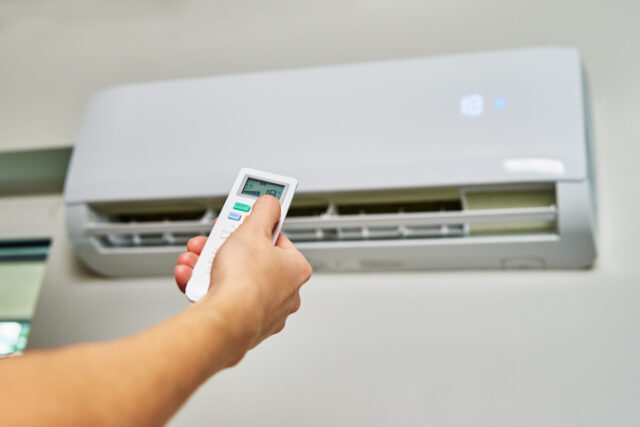
Let’s be honest – it’s pretty tough to survive a hot summer or a chilly winter without an air conditioner. Apart from cooling air, modern air conditioners have a heating function, so if you have one, you’re all set to be comfy.
Simply put – it’s a must-have. The only question is, how do you pick one that fits your living space and doesn’t waste any electricity? If it’s running non-stop, your air conditioner risks not just hitting your wallet with a hefty electricity bill but also degrading over time.
Of course, you can repair it if you address professional services like the air conditioner service in the Tampa area. However, buying the right device from the get-go will prevent any issues, so let’s find out which one suits your needs best.
Cooling Capacity
The most crucial aspect of any air conditioner is its cooling capacity. Don’t confuse it with power consumption, which shows how much electricity per hour the air conditioner uses during continuous operation. In contrast to power consumption, cooling power indicates how much the air conditioner can reduce the temperature in the room.
Cooling power is measured in watts (W) or British thermal units (BTU) (1 BTU equals 0.293 W). It’s often indicated in the air conditioner model name while using the marking in BTU units. The cooling capacity of 5000 BTU will be represented by the number 05. Modern manufacturers produce air conditioning devices with the following gradation of cooling capacity:
- 05 (5000 BTU, or 1.47 kW) – suitable for residential premises up to 15 square meters;
- 07 (7000 BTU or 2.05 kW) – enough for a room up to 20 square meters;
- 09 (9000 BTU or 2.64 kW) – suitable for rooms up to 26 square meters;
- 12 (12000 BTU or 3.52 kW) – for 30-35 square meters;
- 18 (18000 BTU or 5.28 kW) – such models should be installed in rooms up to 52 square meters;
Pros & Cons of Air Conditioner Types
Having decided on the air conditioner cooling capacity, you should consider the following advantages and disadvantages of different types of air conditioners:
- Monoblock air conditioners have a higher noise level. Therefore, they are less in demand than split and multi-split systems with compressors installed outside the room. The window and mobile air conditioners are best when it’s not possible to install a split system;
- The advantage of mobile air conditioners is the ease of installation compared to other types. You just need to have a hole in the wall or window for a corrugated pipe that removes warm air from the room. Before considering a mobile air conditioner, keep in mind that such devices have low power, so make sure your room is not too big;
- Split systems of cassette and channel type provide the most uniform airflow distribution within the room. They are perfect for rooms with a large number of people, but the installation of such air conditioners is a time-consuming and complicated process. In addition, they can only be installed in a room with a ceiling height of at least 3 meters to hide the indoor unit behind a suspended decorative structure;
- The advantage of ducted air conditioners and multi-split systems is the ability to effectively cool or heat the air in several rooms at once. Installation of a split system with a duct-type indoor unit requires designing the laying of air ducts in advance. If you value maintaining the temperature regime in different rooms the most, it’s better to choose a multi-split system;
- Column-type air conditioners are suitable only for large rooms and are rarely used in residential areas due to their size and high cooling capacity.
Split systems with a wall-mounted indoor unit are the most popular type of house/apartment air conditioners, thanks to:
- High power, allowing for cooling large rooms
- Ease of installation and maintenance
- Lower noise level compared to other types of air conditioners
- Ease of airflow control
- A large number of additional functions
- Affordable price
Extra Features
If you are ready to splurge a bit for a better user experience, consider the following functions:
- Heating – some models can operate in heat pump mode at outdoor temperatures from -7 to -35 °C
- Ventilation – during winter, this mode helps to distribute the warm air accumulated at the top evenly throughout the room
- Dehumidification, humidification, and air ionization
- Air purification using coarse, fine, carbon, electrostatic, and HEPA filters that trap coarse and fine dust, plant pollen, smoke, odor, and dust nanoparticles
- Airflow direction changing
- Automatic selection of the operating mode
- Freon leakage & filter condition control
- Restart – this function allows the air conditioner to start after an emergency shutdown while maintaining the previous operating mode.
Best Air Conditioner Brands
Modern air conditioners vary by type, number of extra features, and, of course, price.
- Affordable options: Akai, AC Electric, Dekker, Kentatsu, AUX, Midea, Electrolux;
- Mid-tier: Cooper&Hunter, Carrier, McQuay, Gree, Chigo, Daikin, EWT;
- Premium models: Mitsubishi Electric, Panasonic, Daikin, Fujitsu, Mitsubishi Heavy, Toshiba.












